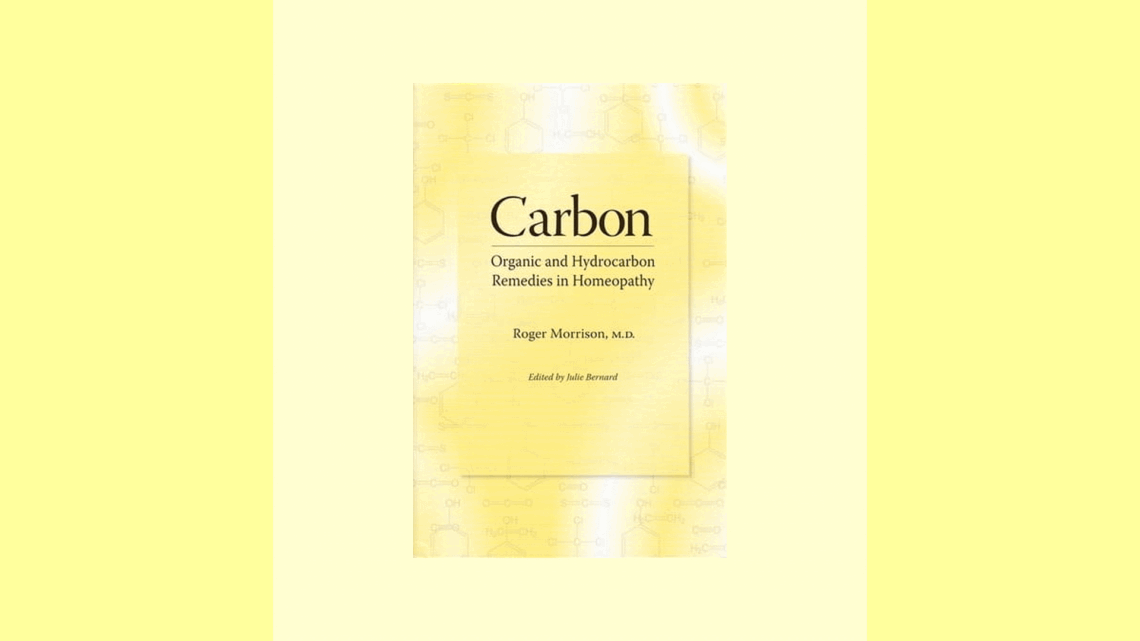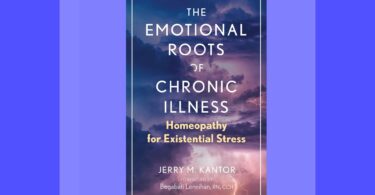Title: Carbon, Organic and Hydrocarbon Remedies in Homeopathy
Author: Dr. Roger Morrison, MD.
Publisher: Hahnemann Clinic publishing, USA
Year of publication: 2006
ISBN 0-963-5368-4-2
Hardcover 842 pages, black and white
Price: $108.00

Lo and behold, it is Carbon, Carbon, everywhere! Though Carbon makes just 0.2% of earth’s crust, it is found in every cell of every being. It exists as a compound in combination with almost all elements, and with four electrons available for sharing as co-valent bonds, Carbon is the very source of life.
As it turns out, Carbon present naturally in the ecosystem of the earth is not a problem. The man-made derivatives of hydrocarbons extracted from earth, and utilized in practically every area of our modern, technological and industrial life are a major problem.
This much is quite obvious from reading the introduction in Dr. Morrison’s book on Carbon. In a direct manner, Dr Morrison makes a strong point that man-made hydrocarbon derivatives are a boon and a bane.
I will give you an example from the blood banks in hospitals. When a patient needs transfusion, blood and its components do save his life. However, the blood is stored in plastic bags that are discarded in landfills or incinerated after use, releasing a huge amount of toxic chemicals into the earth and the atmosphere.
There cannot be blood banks without plastic bags but these bags are notoriously toxic and contain di(2-ethylhexyl) phthalate (DEHP). DEHP, the hydrocarbon chemical that allows the vinyl plastic to be pliable, is referred to as a plasticizer. DEHP is added in large quantities to the plastic, approximately 40% by weight.
It is not bound to the plastic but is dissolved in it. As a result, DEHP can leak into blood stored in the container and be transfused along with the blood, and it is a known carcinogen from animal studies. So, you see, how carbon compounds are both a boon and a bane.
Dr. Morrison came upon the idea of studying Carbon compounds as a group while preparing a course at Hahnemann College, and good for us that he took it upon himself to do this task. In Hahnemann’s time Graphite, Petroleum, Camphora, Carbo vegetabilis and animalis were proven.
Roll forward 200 years and we have nearly 180 Carbon based remedies in our pharmacopeia. How can we study these remedies as a group? This question is particularly relevant in this day and age because each one of us have in our body, trace amounts of hydrocarbons that should not be there. These hydrocarbons are not innocent entities present in our cells and blood. They are neuro-toxic, hepato-toxic and carcinogenic.
They cause birth defects, hormone disruption, infertility, multiple chemical sensitivities, allergies, skin pathology, and they accumulate in the body fat of humans and animals that humans eat.
These hydrocarbons have invaded our food crops, atmosphere, ground water, north and south poles, oceans, rivers, soil and even outer space. They cross the blood-brain barrier and cross the placenta to unborn babies in the womb.
Various aspects of our relationship with hydrocarbons, for example, greed, exploitation, cheapness, protection, time and denial – could be seen as points that would emerge in the proving and the symptoms of the patients who require remedies made from hydrocarbons.
This angle is explored in the chapter on mental themes in the hydrocarbon remedies. These themes are not extracted from repertories and materia medica, but are actually encountered by Dr. Morrison in his practice.
Confusion, weak or unclear identity, blandness of personality, issues around value, money, self-worth, mental weakness, sensations of falling, sinking, death, isolation, industriousness and ambition, passivity and motivation, apathy and indifference, dwelling on past, ghosts, suffocation, chest and abdomen soreness due to sensation as if clothing were very tight, aggression, quarrels, censoriousness, abusiveness, sarcasm, striking, desire to kill, hurry, euphoria, cheerfulness, ecstasy, shock, floating / flying, penetrating, jumping, heightened sexuality, and childishness are some other themes. Dr. Morrison makes it abundantly clear that the exact opposite of these themes can also be encountered in hydrocarbon remedies. In the area of general and physical characteristics of hydrocarbons, at least 57 symptoms and remedies that cover those symptoms are given.
The Materia medica section on the remedies makes the main body of this book. A descriptive paragraph or two in the beginning gives you useful and helpful essential information. Common names in English, scientific names, chemical formula, structure, information about the group into which the remedy belongs, proving information, best resources, and diagrams for the molecular structure come next.
The chemistry part of the remedies is just enough to educate you in case your academic background does not include college level organic chemistry, but by no account it is intimidating.
The details that Dr. Morrison has included in this book keep you interested without causing an information-overload. The true icing on the cake is the homeopathic picture of the remedy. For some remedies, a case or two are included as well. One hundred and eighty-two remedies are covered in this manner. And for that alone, I say ‘wow’.
Though I was expecting only hydrocarbon derivatives listed as remedies, I also found some naturally occurring organic compounds: Acetic acid, Butyric acid, Citric acid, Lactic acid, Mentha piperita, oleum animalis, jacoris and santalis, Saccarm album, and Succarum fruitti, Tartaric acid, Thiosinaminum and Vanilla. Materia medica of these naturally occurring organic compounds did indeed feel like a bonus.
This bulk of the book is purely informational but it does not numb your brain. It is just enough in depth and content so that after reading it, you emerge with some essential knowledge.
The section of this book that deals with the meaning of various hydrocarbon groups is actually quite inspiring. It teaches you a whole new way of looking at the hydrocarbon groups of remedies.
Studying remedies in such distinct groups makes it a lot easier to recognize the themes when presented in our patient narratives and their symptoms. This section helps me think, wonder, and go into case taking with a palpable excitement that accompanies an adventure. In this section, meaning and rubrics are given for ten groups of hydrocarbons: alcohols, aliphatics, amines, aromatics, carbonyls, ethers, nitrites, nitriles, sugars and terpenes.
So, you see, in this book there is a lot to learn and absorb. A good way to internalizing this book is to completely familiarize yourself with the themes of hydrocarbons that you might encounter in your practice.
When these themes raise a red flag, you begin to suspect that an organic remedy might be needed. As you explore and repertorize the symptoms, the need for hydrocarbons will become quite clear.
The themes are the step one in this adventure. And once you get to the meaning part of the hydrocarbons, you can begin to compliment yourself on having learned about the Carbon group of remedies. When Dr Roger Morrison is the teacher, I must say, this learning part can be done rather easily.
I got my copy of this book in 2006 when it first came out. Since then, I have used it a few times every week. The book has become dog-eared from all that page turning, but I have still not outgrown it. My earnest hope is that Dr. Morrison will offer many more books of such strength, depth and character to the global homeopathy community.
Happy reading.






